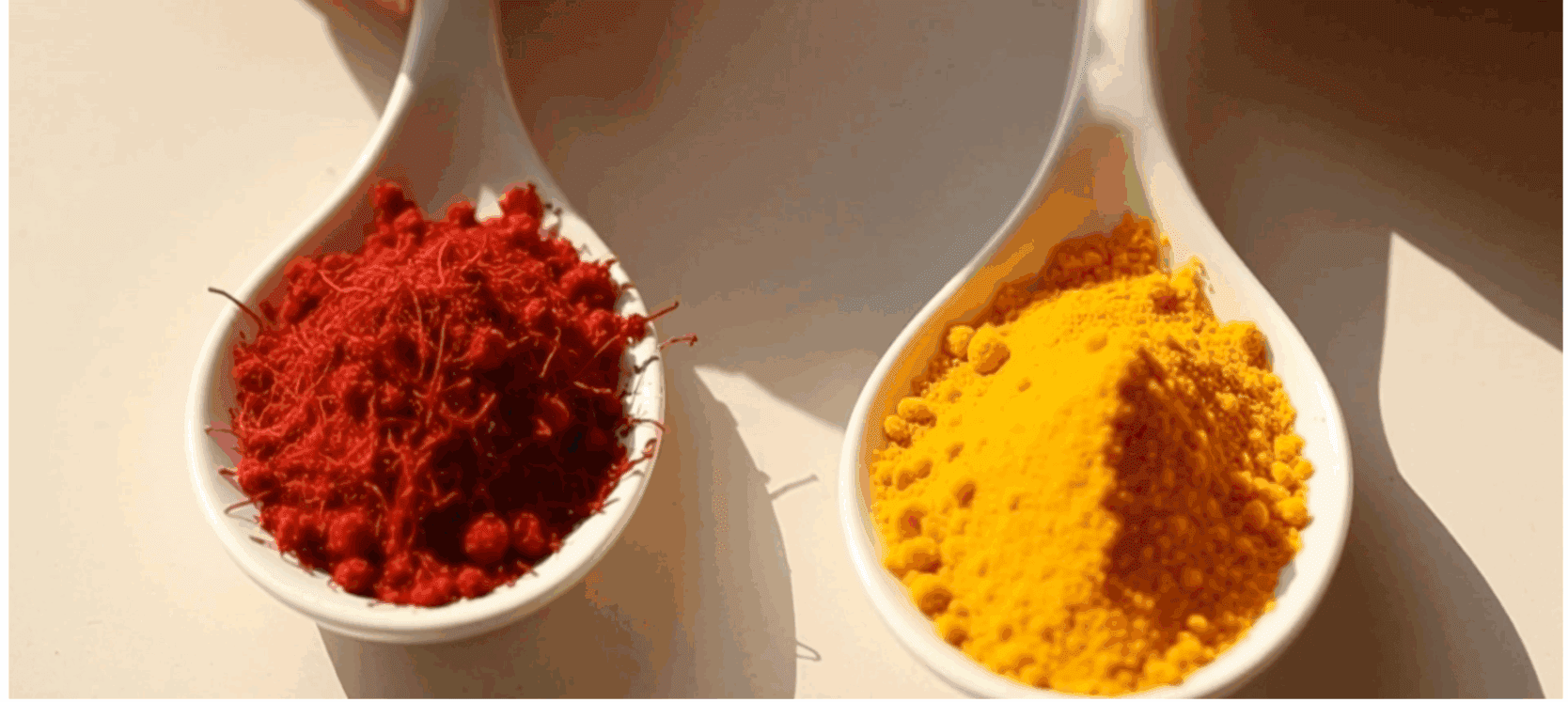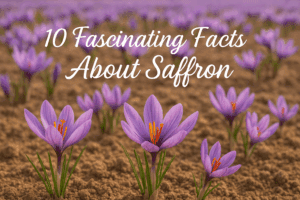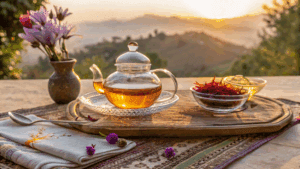Turmeric and saffron are two of the most celebrated spices in the world, known for their vibrant golden hues and rich histories in culinary and wellness traditions. But despite their similar appearance, these spices are not the same. Let’s explore what sets them apart and why choosing authentic saffron matters for flavor, health, and heritage.
Saffron vs. Turmeric: Origins and Appearance
- Saffron comes from the delicate stigmas of the Crocus sativus flower. Each flower produces only three red threads, making saffron the world’s most precious spice by weight.
- Turmeric is a root (rhizome) from the Curcuma longa plant, related to ginger. It’s typically ground into a bright yellow-orange powder.
Flavor Differences
- Saffron offers a subtle, earthy, and floral flavor with honeyed sweetness and a gentle bitterness. It is prized for its complexity and the way it enhances both savory and sweet dishes.
- Turmeric has a warm, peppery, and slightly bitter taste with an earthy, musky aroma. It’s a staple in curries and golden milk, but its flavor is more robust and less delicate than saffron’s.
Color and Culinary Uses
- Saffron imparts a rich golden-yellow color and subtle aroma to rice, stews, teas, and desserts. Just a few threads can transform a dish.
- Turmeric gives a bold yellow-orange color and is used in larger quantities for curries, soups, and health drinks.
Health Benefits
- Saffron contains powerful antioxidants like crocin, safranal, and picrocin, known for supporting mood, sleep, hormonal balance, and overall wellness.
- Turmeric is rich in curcumin, a compound celebrated for its anti-inflammatory and antioxidant properties, supporting joint health and immunity.
Common Confusions
People often call turmeric “Indian saffron” because both spices are golden and popular in traditional wellness, but they are not interchangeable. Turmeric costs much less and is easy to find, while saffron’s unique flavor and rarity make it a true luxury ingredient.
How to Tell Them Apart
- Appearance: Saffron is sold as fine red threads; turmeric is a yellow powder or fresh root.
- Flavor: Saffron is delicate and floral; turmeric is earthy and robust.
- Price: Saffron is significantly more expensive due to its labor-intensive harvest.
Final Thoughts
While turmeric and saffron both bring golden color and wellness benefits to your kitchen, their flavors, origins, and uses are distinct. For authentic premium saffron’s subtle taste and heritage, trust Zarafron’s commitment to quality and tradition. When a recipe calls for saffron, there’s no true substitute, each golden thread is a taste of history.




